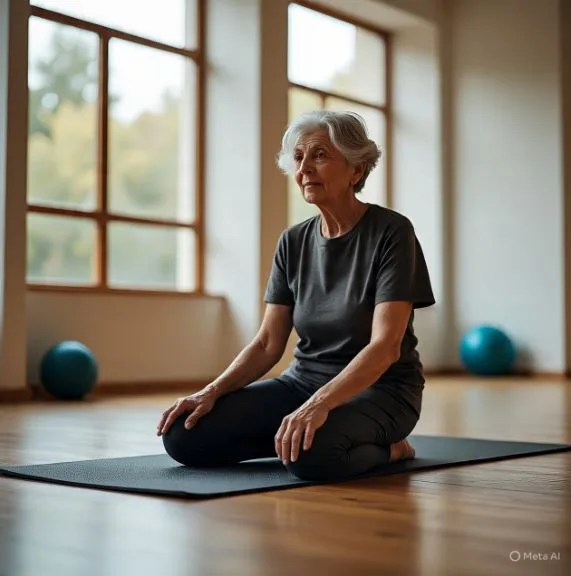Why Zumba Might Be the Real Key to Sticking with Your Fitness Goals
The “Consistency Crisis” in Traditional Fitness
For years, gyms have sold the dream of transformation: memberships, meal plans, rows of machines promising strength and tone. Yet statistically, over 50% of gym members stop going after just six months. The story usually goes like this — motivation drops, workouts feel monotonous, and results stagnate. So while the gym model might offer variety on paper, its execution often alienates beginners and even seasoned fitness enthusiasts.
What does this mean for goal-setters? Most people aren’t failing because they can’t do a workout — they’re failing because they can’t keep showing up for it.
That’s where Zumba disrupts the traditional formula.
Zumba’s Secret Sauce: Movement Meets Enjoyment
At its core, Zumba is a dance fitness program — but calling it that almost undersells what actually happens in the room. Zumba classes combine Latin-inspired choreography with aerobic elements, blending cardio, strength, and coordination into one sweat-filled session.
The difference is emotional. Zumba sessions are less about counting reps and more about rhythm. You’re not just exercising; you’re engaging, laughing, and, in many cases, losing track of time — a psychological shift that keeps people coming back.
In contrast to the repetitive nature of gym workouts, Zumba offers a rotating playlist, varied moves, and instructors who often act more like hype coaches than trainers.
Accountability Without Intimidation
For those looking up “Zumba classes near me,” community is often a major driver. You’re not walking into a space where everyone is wearing headphones, silently pushing through sets. You’re entering a group that moves together, cheers each other on, and — most importantly — notices when someone’s missing.
This subtle accountability matters. Research shows people are far more likely to stay committed to exercise routines when they feel socially connected to them. And unlike gym culture, which can sometimes feel intimidating or competitive, Zumba is rooted in approachability.
The Cardio-to-Fun Ratio
Many gym-goers plateau because cardio becomes a mental burden. Treadmills, stationary bikes, and ellipticals are effective but notoriously dull for many. With Zumba, cardio is masked by movement. A single class can burn between 400–600 calories depending on intensity and individual effort — rivaling most gym-based cardio regimens — yet feels dramatically less draining.
This joy-based approach to exercise taps into intrinsic motivation: the desire to move for the sake of enjoyment, not obligation. For goal consistency, that kind of motivation is priceless.
Goal Tracking Isn’t Just About Weight
One underrated advantage of Zumba? Its broader definition of success.
Gym progress often hinges on numbers — pounds lifted, calories burned, inches lost. But Zumba celebrates other metrics: increased stamina, improved mood, stronger coordination, and simply showing up. That shift in measurement can be a major psychological win, especially for those who feel disheartened by slow physical results.
Moreover, participants regularly report emotional benefits: stress reduction, improved self-esteem, and a sense of release. These “wins” contribute to longer-term habit formation, helping individuals stay aligned with their wellness goals even when the scale doesn’t budge.
Zumba’s Accessibility Advantage
Most people who search for “Zumba classes near me” aren’t elite athletes. They’re office workers, parents, students — individuals seeking a sustainable way to stay active. And Zumba meets that demand through low-barrier entry.
There’s no need to learn complex gym equipment. No need to pay for a personal trainer. No need to feel embarrassed for missing a move — in fact, freestyle moments are encouraged.
Additionally, Zumba caters to multiple fitness levels. Whether you’re looking for high-energy cardio or a modified low-impact version, instructors can guide the entire room through a full-body workout without excluding less experienced participants.
Compare that to a typical gym where beginners are often left alone to figure things out — it’s easy to see why many opt for a dance floor instead of a weight room.
Can You Actually “Train” with Zumba?
Here’s where nuance matters. Zumba likely won’t replace strength-specific programs if you’re trying to build muscle mass or train for competition. But for general health, cardiovascular improvement, stress management, and movement consistency, it overdelivers.
More importantly, it acts as a gateway. Many participants who build confidence through Zumba eventually explore other fitness modalities — resistance bands, yoga, or even weight training — with less fear and more body awareness.
Zumba may not check every box for every person, but it might be the best “first box” to check for someone struggling to even get started.
So, Is Zumba a Better Option Than the Gym?
The question shouldn’t be whether Zumba is better — but whether it’s better for you.
If your fitness goals require strict programming, progressive overload, and isolated strength routines, then a gym will always have the upper hand.
But if your goals center around:
- Building a consistent habit
- Moving without dread
- Staying mentally engaged
- Feeling welcomed instead of judged
…then Zumba might be the most underrated tool in your fitness arsenal.
The decision ultimately comes down to sustainability. And the best program in the world means nothing if you quit it after two weeks.
Search for Zumba classes near me — not to commit, but to observe. Drop into a class, even just once. Forget calories. Forget technique. Just move.
The goal isn’t perfection — it’s consistency. And sometimes, all it takes to stay consistent is a little music, a good beat, and the permission to dance like no one’s watching.





